Best Materials for Artificial Flowers 2025: PE vs PU vs PVC vs Silk-Touch?
Budgets slip when petals look plastic or colors fade. Refunds rise. Teams waste time. Pick the right compound and stop the loss at the source.
The best materials for artificial flowers in 2025 are hybrid: PE for flexible shaping, PU for lifelike touch, PVC for structure, and silk-touch finishes for premium look with export-ready durability.
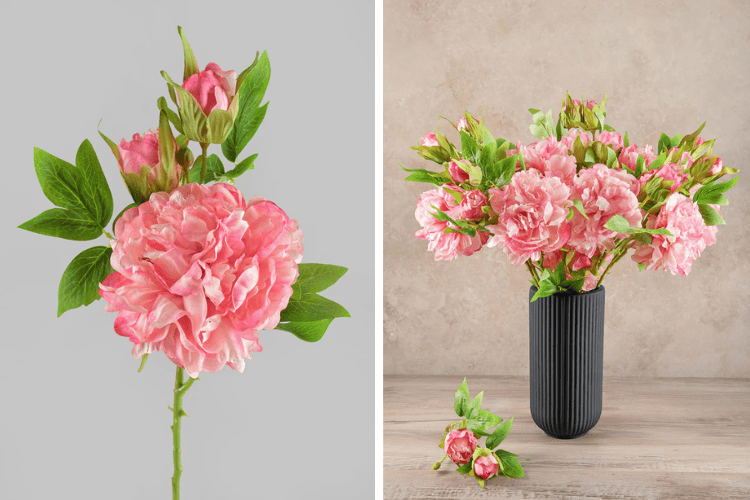
This guide clarifies the best materials for artificial flowers across jobs and climates so U can brief suppliers with confidence.
Choosing the best materials for artificial flowers is not a factory checkbox. It decides customer trust, return rate, and your long-term margin. If cost planning is your next step, compare total ownership with our internal benchmark post Artificial vs Real Flowers: Cost Guide for hotels and weddings.
Overview of Materials Used in Artificial Flowers?
Many catalogs still mix low-grade plastic to cut cost. Colors dull, petals crack, and buyers churn. That is why a clear map of the best materials for artificial flowers matters now.
Modern faux florals use PE, PU, PVC, and silk-touch polyester; each material serves a different job across look, touch, logistics, and compliance.
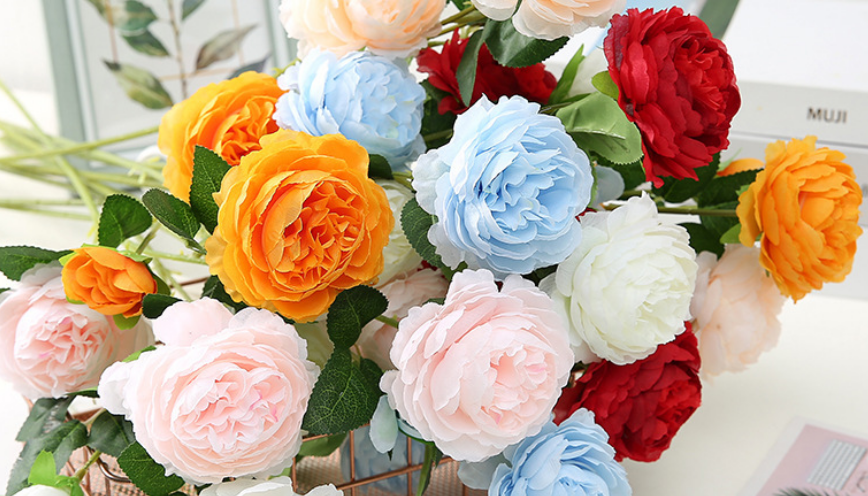
Dive Deeper
Start with roles. PE (polyethylene) bends without breaking. It gives a soft, matte look and light weight. It works well for garlands, filler florals, and mixed-SKU sets where you need volume with low DIM weight. PU (polyurethane) brings elastic return and petal memory. It keeps curves under pressure and cold. It looks rich on camera and in person. PVC (polyvinyl chloride) provides spine and shape. It holds long stems and broad leaves. It performs outdoors when stabilized for UV. Silk-touch polyester is not silk. It is polyester with micro-film finishing that feels like living petals and photographs like a dream.
When U compare the best materials for artificial flowers, think in roles first, then tests, then logistics. That order keeps choices simple and repeatable.
If you want to align naming across teams, send them Faux Greenery Meaning and Artificial Plants Definition so everyone speaks the same language.
Compliance anchors the choice. EU REACH sets chemical safety baselines (ECHA overview). Outdoor projects need UV weathering verification (see ASTM G154 and ISO 4892-2). Venues often require FR; fabric and some polymer lines can be tested against NFPA 701. For a practical checklist, share our Faux Plants Certifications with your installers and buyers.
Lab reports help U validate the best materials for artificial flowers before a PO, which saves time at customs and on site.
PE vs PU: Realism and Durability?
Two roses can look the same online yet feel different on site. The base material explains it. PE shapes easily and keeps cost low; PU feels more real and holds up longer under use.
Choose PE when you want light weight and price control; choose PU when touch, curve memory, and long-term realism decide the sale.
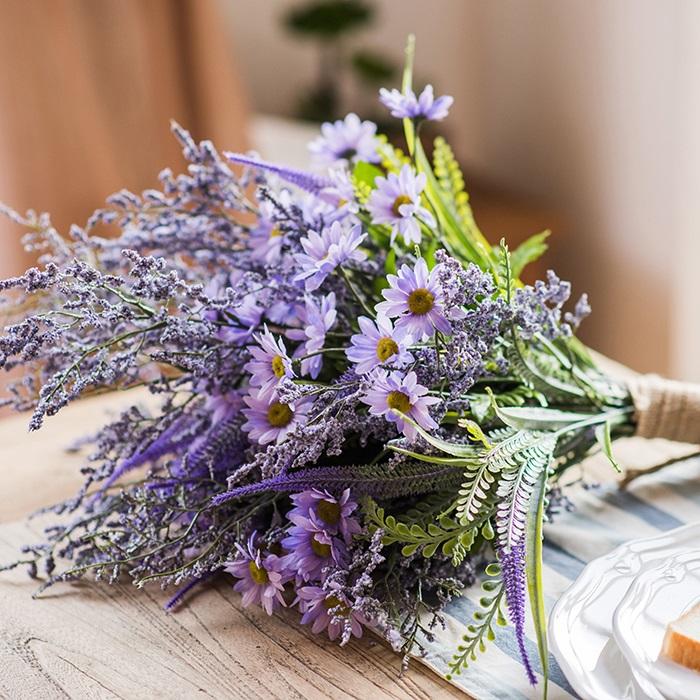
Dive Deeper
Think in use cases, not theories. PE helps you build big installs at scale. It trims freight and packages fast. It can struggle with heat and fine paint lines. If petals must keep a crisp edge, PE alone may not satisfy high-end buyers. PU solves that. PU petals spring back after compression. Macro photos look better. Cold chain and winter routes do not crack the surface. The trade-off is cost and a bit more weight.
Use this test to rank the best materials for artificial flowers for your brief: weight target, photo needs, touch standard, and route temperature.
If you need more context for photography and close-up work, see Silk Flowers vs Faux Plants and How to Make Silk Flower Bouquets Look Real; both posts show how the best materials for artificial flowers change photo results.
No single winner fits all. The smart move is blend: PE stems for flexibility + PU petals for realism. When budget is tight, run PE petals with silk-touch coating on premium pieces. For job-specific picks, this explainer helps buyers choose SKUs that actually sell: Beautiful Fake Flowers: Year-Round Winners.
PVC in Artificial Flowers?
PVC gets a bad name when people recall old, rigid plastics. Today’s export-grade formulas tell a different story. With the right stabilizers, PVC delivers structure, weather performance, and long life. That makes it one of the best materials for artificial flowers when structure matters.
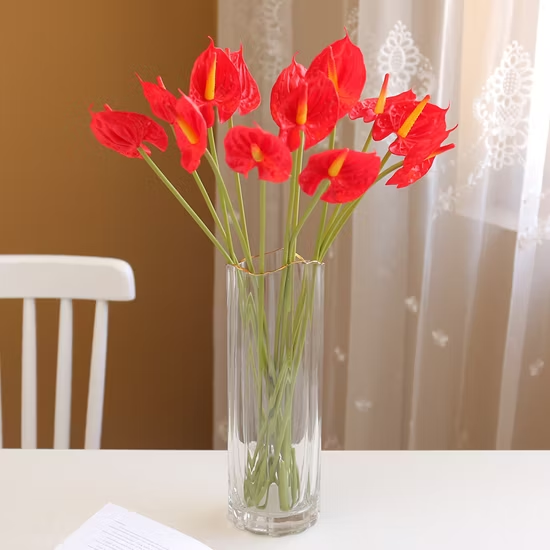
Dive Deeper
PVC is not the star of petals. It is the skeleton and shield. Tall arrangements fail when stems sag. Outdoor palms fail when leaf ribs twist. PVC fixes both. Add UV package for sun, and pick low-phthalate, REACH-compliant grades for peace of mind. You get form, safety, and service life.
For outdoor tenders, shortlist the best materials for artificial flowers that keep shape and color under heat, wind, and cleaning cycles.
If outdoor is your main business, benchmark selections with Best Artificial Outdoor Plants — Buyer’s Edition and Best Faux Outdoor Plants 2025. They map the best materials for artificial flowers to desert, coastal, and humid climates.
For indoor bouquets, PVC belongs inside stems and leaf cores. For outdoor walls, pair PVC backbones with PU or PE foliage to hit price and performance. This approach increases perceived realism while controlling the BOM and warranty tickets.
What Is Silk-Touch Technology?
Many teams ask if silk-touch means natural silk. It does not. It is a micro-coating and brushing process on polyester that creates a petal-like sheen and soft friction that feels real in hand and looks real on camera.
Silk-touch turns standard polyester into premium petals and boosts conversions in e-commerce and wedding portfolios.
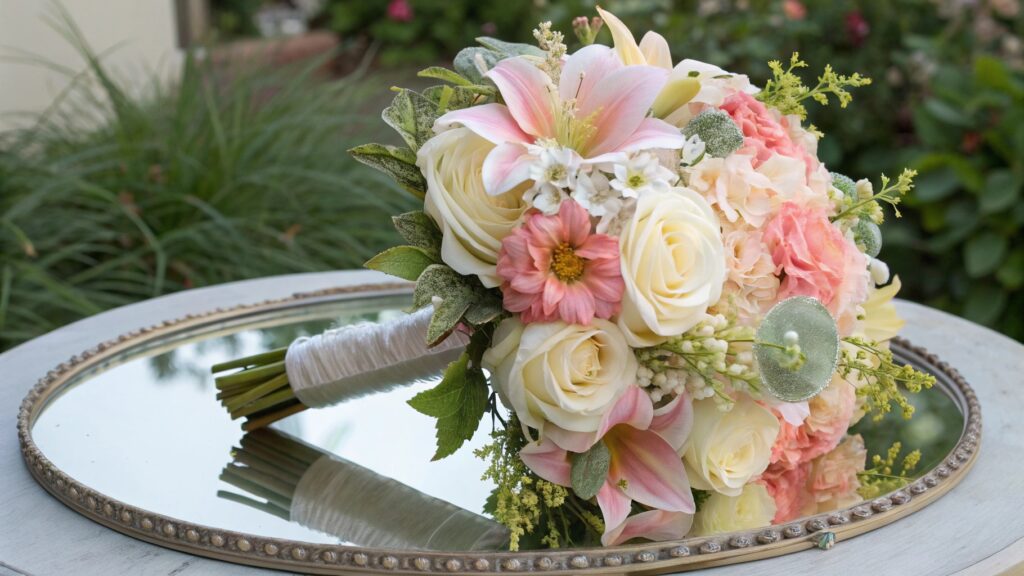
Dive Deeper
Silk-touch changes perception at first glance. The finish rounds micro-edges, diffuses highlights, and holds gradient dyes. Under studio lights, silk-touch petals give clean highlights without harsh plastic glare. On phones, the look reads as “fresh” and “alive.”
Studios that care about photography often count silk-touch among the best materials for artificial flowers, because it lifts close-up detail and color depth.
If you sell event kits, these two articles help your photo planning and SKU mix: The 2025 Faux Wedding Flower Trend Report and How to Create a Luxury Look with Budget-Friendly Faux Flowers. Both show how the best materials for artificial flowers plus silk-touch improve macro images and conversion.
Do not forget compliance. Water-based coatings and bio-based polyester are rising for brands with ESG goals. If your market is the EU or Japan, keep REACH paperwork ready (ECHA overview). If venues ask for FR, check NFPA 701 test options (Intertek guide). For weathering plans, align your lab with ASTM G154 or ISO 4892-2.
Best Choice for 2025 Wholesale Buyers?
There is no single silver bullet. The winner is a system. Your catalog should group SKUs by job and run the right blend behind each job.
The best materials for artificial flowers in 2025 come from a hybrid spec: PE for flexibility and weight, PU for realism, PVC for structure and outdoors, and silk-touch for top-tier finish.
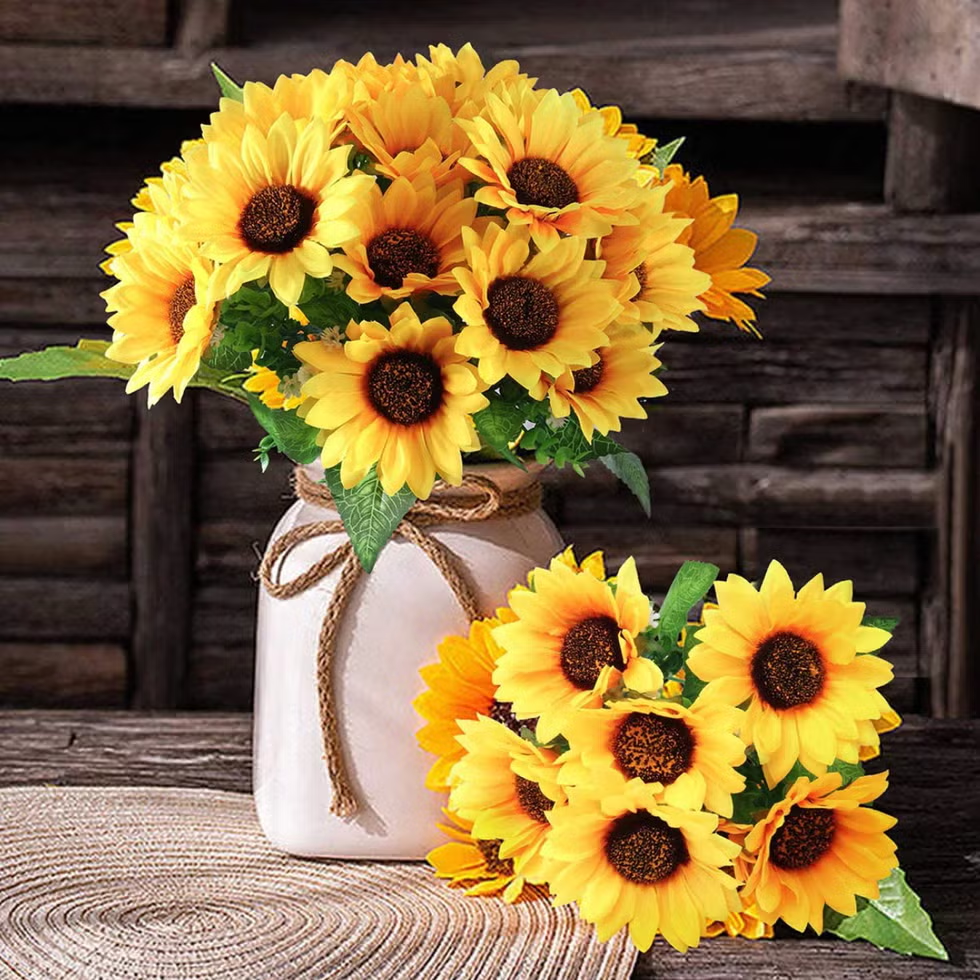
Dive Deeper
Build your bill of materials around the job:
- Event walls and arches: PE vines + PVC backbones + PU hero blooms + selective silk-touch on focal flowers. For visual planning, copy ideas from Faux Greenery Wall Photo Guide.
- Retail bouquets: PE stems + PU petals + silk-touch on the main colorway for photos and shelf appeal. For SKU inspiration, skim 10 Elegant Fake Flower Arrangements.
- Outdoor landscaping: PVC structure + PU or PE foliage with UV package; standardize pigments. Compare choices in Best Artificial Outdoor Plants for Commercial Use.
- Venue-restricted installs: Confirm NFPA 701 for FR lines; run PVC or PU with FR additive where required and label batches. For a compliance walkthrough, read Faux Plants Certifications.
If your audience still debates terms like “silk flowers,” send them Silk Flowers vs Artificial Flowers. Clarity speeds sampling and keeps meetings short. When you need a simple primer for buyers, link them to Stunning Artificial Blooms: Complete Guide.
Ready to spec the best materials for artificial flowers? Save a sample kit for your next buyer meeting and align quotes in one pass.
Conclusion
Pick a hybrid spec. Use each material for its job. Win on realism, lifespan, and tests. This approach helps you select the best materials for artificial flowers for each project and region.
10 B2B FAQs
- Which material gives the most realistic petals? PU with silk-touch finishing gives the most natural feel and look.
- How do I use PE without looking cheap? Keep PE for stems and fillers; use PU or silk-touch on focal blooms.
- Is PVC safe for exports? Yes, when you use low-phthalate, REACH-compliant grades and keep documentation.
- What passes UV tests outdoors? PVC structures and PU/PE foliage with a proper UV stabilizer package; verify to ASTM G154 / ISO 4892-2.
- Can faux flowers meet NFPA 701? Yes. Use FR-treated PU or PVC components; label batches and keep lab reports.
- When should I choose all-PU bouquets? When touch and photo quality drive sales, like bridal sets or flagship displays.
- Do silk-touch petals fade faster? Indoors they hold color well; outdoors pair with UV-treated sets.
- How to lower DIM weight for air freight? Use PE stems and lighter fillers; keep hero petals in PU or silk-touch only.
- What proofs should buyers request? REACH, UV test, and FR reports tied to batch numbers plus component lists.
- What is the fastest sampling plan? Request a hybrid kit: PE stems, PU petals, PVC leaf ribs, and a silk-touch hero bloom in your target colors.
References
- 👉 REACH overview (ECHA): https://echa.europa.eu/regulations/reach/understanding-reach
- 👉 UV test methods (Q-Lab): ASTM G154 | ISO 4892-2
- 👉 Fire standard: Intertek on NFPA 701 & standard listing: https://www.intertek.com/textiles-apparel/flammability-testing/
